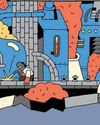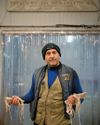
Last year was humbling for the Federal Reserve. In 2019 policymakers were forced to unwind a series of interest-rate hikes they had implemented the year before, citing strains on the U.S. economy from President Trump’s trade wars and a global slowdown. In the process, the central bank appeared to be sacrificing its autonomy by caving into Trump’s relentless demands for cheap money. There was still another reason for the Fed’s reversal, one that goes to the heart of the institution’s dual mandate of ensuring full employment and stable prices. It had underestimated how many jobless Americans were still out there—not technically counted as unemployed but willing to work.
By the time the jobless rate dipped below 4% in the spring of 2018—for only the second time in a half-century—central bankers thought they had accomplished their goal of maximum employment. Their next challenge was to ensure the tight labor market didn’t trigger a so-called wage-price spiral. They began charting a course to raise interest rates high enough to discourage hiring. Yet, unexpectedly, inflation didn’t bubble up, even as unemployment continued to drift lower. It’s 3.5% now.
This story is from the January 27 - February 03, 2020 edition of Bloomberg Businessweek.
Start your 7-day Magzter GOLD free trial to access thousands of curated premium stories, and 8,500+ magazines and newspapers.
Already a subscriber ? Sign In
This story is from the January 27 - February 03, 2020 edition of Bloomberg Businessweek.
Start your 7-day Magzter GOLD free trial to access thousands of curated premium stories, and 8,500+ magazines and newspapers.
Already a subscriber? Sign In

Instagram's Founders Say It's Time for a New Social App
The rise of AI and the fall of Twitter could create opportunities for upstarts

Running in Circles
A subscription running shoe program aims to fight footwear waste

What I Learned Working at a Hawaiien Mega-Resort
Nine wild secrets from the staff at Turtle Bay, who have to manage everyone from haughty honeymooners to go-go-dancing golfers.

How Noma Will Blossom In Kyoto
The best restaurant in the world just began its second pop-up in Japan. Here's what's cooking

The Last-Mover Problem
A startup called Sennder is trying to bring an extremely tech-resistant industry into the age of apps

Tick Tock, TikTok
The US thinks the Chinese-owned social media app is a major national security risk. TikTok is running out of ways to avoid a ban

Cleaner Clothing Dye, Made From Bacteria
A UK company produces colors with less water than conventional methods and no toxic chemicals

Pumping Heat in Hamburg
The German port city plans to store hot water underground and bring it up to heat homes in the winter

Sustainability: Calamari's Climate Edge
Squid's ability to flourish in warmer waters makes it fitting for a diet for the changing environment

New Money, New Problems
In Naples, an influx of wealthy is displacing out-of-towners lower-income workers